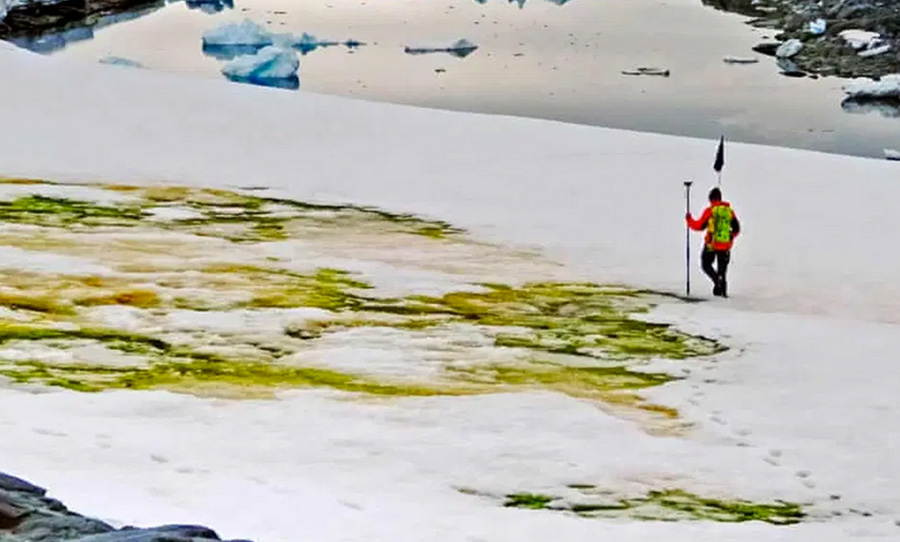Antarctica’s ice is quickly melting as a result of climate change, but that’s not the only effect of rising temperatures. Antarctica’s snow is gradually turning green and we’re all left wondering what it means.
Scientists have concluded that it has something to do with newly growing microscopic algae that thrive on wet snow. Growing algae will turn green in clusters and can be visible from space.
Antarctica’s snow is gradually turning green as a result of climate change and microscopic algae. Rising temperatures encourage the algae to grow in clusters.
Individual organisms are microscopic, but the vast growth and algae clusters turn visibly green.
Scientists conducted a study from 2017-2019, reporting on the “on-the-ground measurements” of each Summer season. Scientists were able to map the algae growth in this time.
Researchers confirmed to CNN that rising temperatures will make the harsh environment on Antarctica “more habitable” for the algae, especially since wet snow is needed for its’ growth.
A variety of researchers have reported growing algae in the “warmer areas” of the continent, including King George Island, Ryder Bay, Fildes Peninsula and Adelaide Island. In these areas, the temperature rises to a little over zero degrees Celsius in the Summer months (November-February).
“As Antarctica warms, we predict the overall mass of snow algae will increase,” Researchers have said.
Scientists have already found 1,679 separate clusters of the algae that covers an area of 1.9 km. The numbers are expected to rise with warming temperatures.



